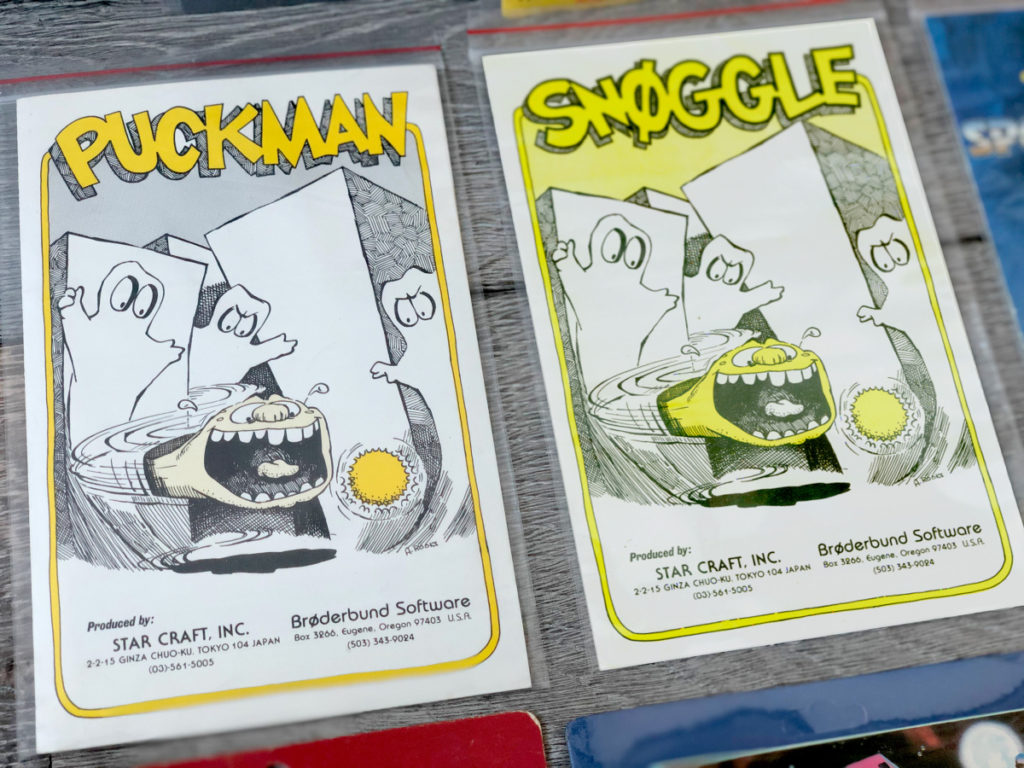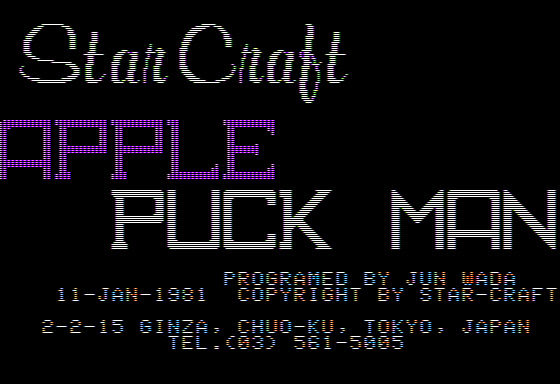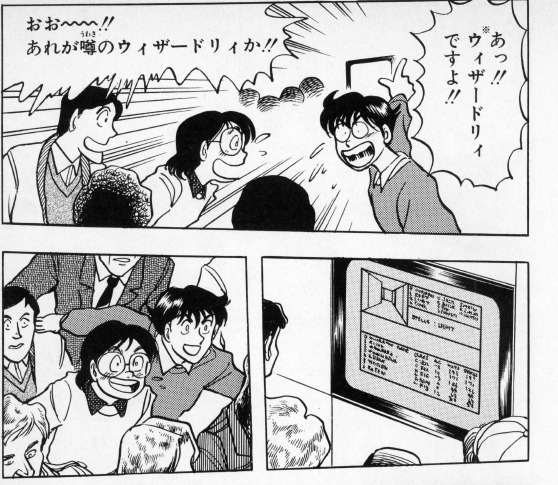The Apple II computer was not only popular in the United States but in Japan as well. Many who began playing games as well as programming on the Apple II went on to create many popular gaming franchises. For example, when Wizardry was released in Japan on the Apple II Yuji Horii of Dragon Quest fame as well as many others became obsessed with it. This even features in the “Road to Dragon Quest” manga we here at Gaming Alexandria scanned.
We recently acquired two Apple II tapes and were successfully able to dump them and get them released. Huge thanks goes out to the apple2infinitum group, as well as 4am (Who has an amazing collection of cleanly cracked Apple II releases on the Internet Archive) and Tom Greene for cracking and creating easy to load .dsk image files of them. If you’re interested you can learn more about Apple II tape copy protection here.
Game Name – Apple Puck Man
Release Date – January 11th, 1981
Programmed by – Jun Wada
Published by – Star Craft
Star Craft was one of the early computer software and game publishers in Japan. Impressively one of their programmers Jun Wada cranked out a decent port of Puck Man (Pac-Man) for the Apple II not long after the arcade release for the Apple II. Eventually the famous American publisher Broderbund would strike up a relationship with Star Craft to publish some of their games and Apple Puck Man was one of them. However not long after Broderbund published Puck Man in the US copyright issues crept up and the game was renamed to Snoggle along with some graphical changes.

The first thing you’ll notice when playing is that it’s turned on its side! This was a programming choice likely to keep the maze looking more faithful, and apparently some players would turn their monitors to the proper orientation to play this. Due to this being released without joystick support the player is given an option in the beginning depending on how they orientate the monitor of which direction they want the A and Z keys to control Puck Man. The early Apple II models only had left and right arrows so this forced game programmers to use other keys for up and down.
Gameplay wise the game is pretty faithful to the arcade but is quite difficult for a variety of reasons. The Ghost AI is pretty relentless however which makes the game much more difficult especially with the control scheme and the orientation issues. When trying to use the tunnels the ghosts do not slow down either which takes away their main benefit. When you get a power pellet and eat a ghost the game pauses while the ghost goes back to the center of the maze to instantly regenerate and you can’t move until this happens. This takes away yet another advantage the arcade game provided as you could move while the ghost eyes try to return to the center of the maze.
While the Broderbund releases of Puck Man and Snoggle have been preserved for awhile the original Japanese release has been unpreserved until now. The easiest way to load the game is to use the .dsk image file and load it into your choice of Apple II emulator.
600DPI Scans –
Disk/ROM Images –
Download DSK image, WAV Recording, and Scans (External Link to Internet Archive)
Game Name – Mahjong
Release Date – 1980
Programmed by – Shimamura
Published by – Tsukumo Original Soft
Tsukumo Original Soft was another early Japanese software publisher who released their games on a variety of early Japanese computers as well as the Apple II. On the loading screen for Mahjong they spell the company name as “TUKUMO ORIGINAL SOFTWARE”. TUKUMO isn’t a typo, it’s an alternate romanization scheme that’s quite popular in Japan (though gradually less so). It emphasizes the logical structure of the Japanese syllabary over pronunciation, so uses, among other differences, TU and SI instead of TSU and SHI. See https://en.wikipedia.org/wiki/Romanization_of_Japanese. You’re looking at the difference between (Revised) Hepburn, which is what most are familiar with, and Kunrei-shiki. (Thanks to Oren Ronen for explaining this!)
Unfortunately I don’t have as much to say on the release of Mahjong as I did for Puck Man. This is partially due to the fact that I do not understand how to play Mahjong despite trying to learn how to several times. It’s also due to the fact that the game is as the title says… it’s Mahjong for the Apple II! Still I am personally impressed by this being created on the Apple II so early and it seems to be quite faithful to the original game as far as I can tell. Like Puck Man the easiest way to load the game is to use the .dsk image file and load it into your choice of Apple II emulator.
600DPI Scans –
Disk/ROM Images –
Download DSK image, WAV Recording, and Scans (External Link to Internet Archive)



 - tape.jpg)
 - tape.jpg)




